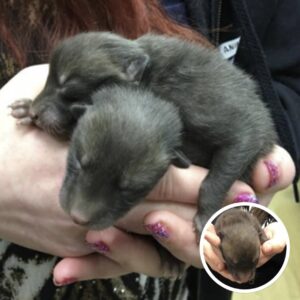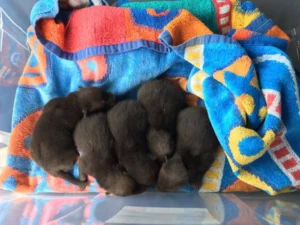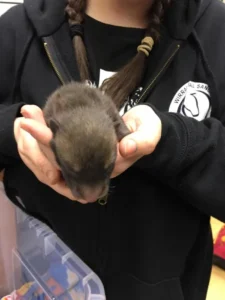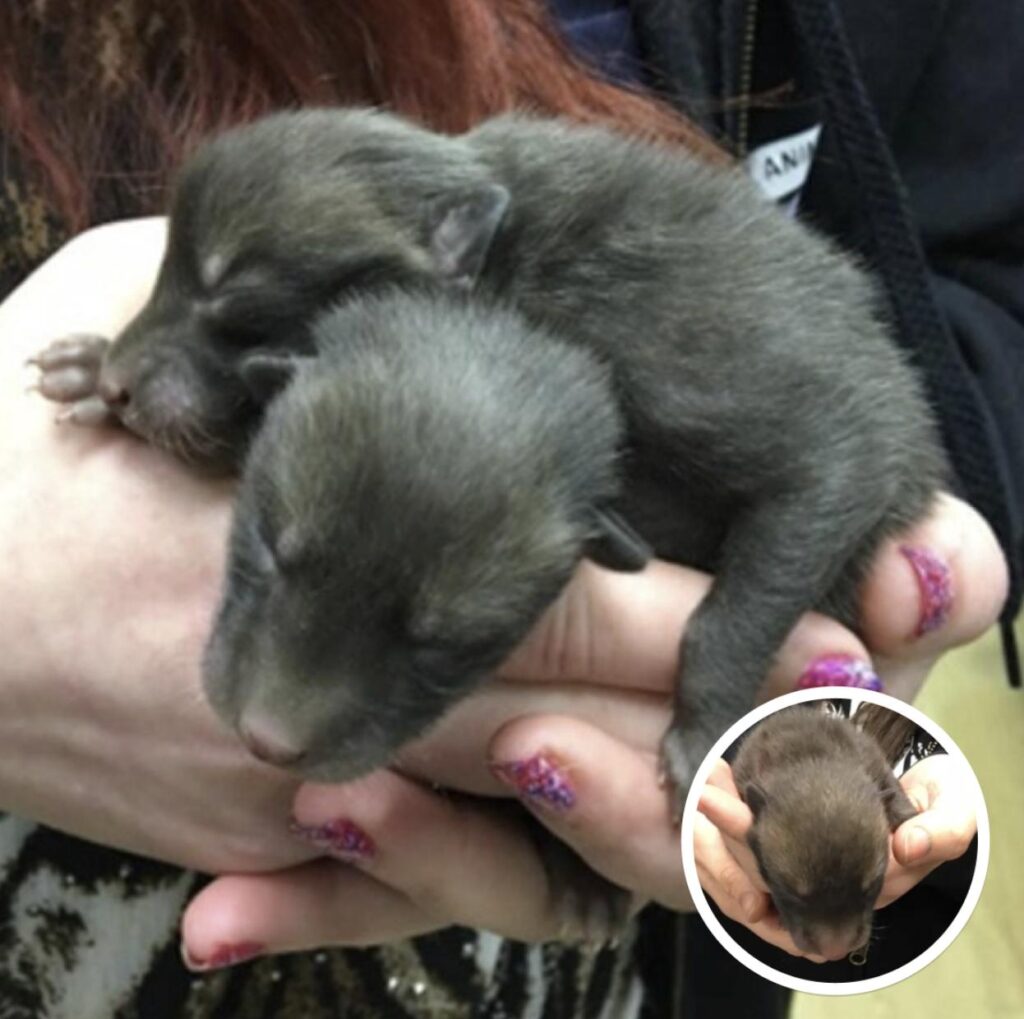What began as an ordinary day of garden waste removal in a quiet English neighborhood unexpectedly transformed into a remarkable rescue mission—one filled with confusion, care, and ultimately, a reunion that touched hearts.
Craig Mcgettrick, a maintenance worker, and his colleague were clearing out rubbish from a residential garden when they came across a discarded mattress lying forgotten among the debris. With no expectations beyond hauling it away, they were startled to discover a small cluster of fragile creatures nestled beneath it. At first glance, they looked like newborn puppies—tiny, vulnerable, and clearly in need of help.

Mcgettrick, caught off guard but compelled to act, gently scooped up the five small animals and placed them in a cardboard box. Despite not being entirely sure whether they were puppies or perhaps kittens, he was certain of one thing—they couldn’t be left there alone and exposed. Not wanting to delay, he took initiative and drove them to a nearby animal rescue center, hoping professionals could provide the care they needed.
Before heading off, he shared several photos of the animals on Facebook, hoping to crowdsource some clarity or assistance. His post was soon shared widely, catching the attention of various animal lovers and welfare groups online.

One of those who saw the photos was Martin Hemmington, the founder of the National Fox Welfare Society. Hemmington received a message from a woman named Beccie who suspected that the animals in the images weren’t puppies at all. Her guess? They were fox cubs.
Intrigued and concerned, Hemmington analyzed the photos and confirmed Beccie’s suspicion—they were, in fact, young red fox cubs. The adorable creatures had been mistaken for puppies, a common error due to the brownish coat that cubs wear in their earliest weeks, which doesn’t yet reflect the fiery red or orange hue typical of adult foxes.
The misunderstanding, while innocent, had significant implications. Fox cubs, especially ones this young, are often left briefly while their mother forages or scouts the area for threats. Human interference, though well-intentioned, can sometimes prevent mothers from returning if the cubs are moved or exposed to strong human scents.

Recognizing the urgency of the situation, Hemmington contacted Paul McDonald—affectionately known in his community as The Fox Man. McDonald is a local wildlife rescuer with extensive experience in fox behavior and rehabilitation. Without delay, he arranged for the cubs to be picked up from the rescue center and brought back to the original site, hoping to return them to their rightful guardian—their mother.
Understanding that a successful reunion would depend on recreating a natural setting and avoiding any unnecessary human contact, McDonald followed a gentle and calculated process. He placed the cubs inside a cardboard box near the exact location where they had been found—beneath the same patch of overgrown garden. To make the cubs comfortable and safe, he added a warm water bottle, simulating the warmth of their mother’s body. Importantly, he refrained from feeding them, knowing that their cries of hunger would act as the best way to signal their mother, who might still be nearby and searching.
Then came the hardest part—waiting. With a mixture of hope and anxiety, McDonald watched from a distance, careful not to interfere or frighten the mother away. For an hour, nothing happened. The wind rustled the trees. The sun dipped lower in the sky. And then—movement.
Out from the shadows crept a sleek adult fox, cautious but determined. She sniffed the air, clearly alert to the familiar scent of her young. Gently, she picked up one of the cubs and disappeared into the brush. Then she came back for another. And another. One by one, she returned until all five cubs were gone—safely in her care.
By 7 p.m., the box stood empty, a simple cardboard cradle that had held the weight of a mother’s hope and a rescuer’s determination. It was a moment of quiet triumph—one not marked by fanfare or flashing lights, but by instinct, patience, and the unspoken bond between a mother and her young.
The entire team—from Mcgettrick, whose curiosity and compassion sparked the chain of events, to Hemmington, who recognized the true nature of the animals, and McDonald, who orchestrated their return—was overjoyed. What could have become a tragic tale of mistaken identity turned into a powerful reminder of how closely nature and humanity are intertwined.
“This,” McDonald later said, “is the best kind of rescue—the one where we step back, and nature takes over.”
In a world filled with rushed headlines and noise, this quiet garden story speaks volumes. It reminds us of the power of compassion, the beauty of the natural world, and the importance of pausing to truly understand before we act. And sometimes, as in this case, all it takes is an old mattress, five tiny cubs, and a group of people willing to do the right thing—to turn a misunderstanding into a miracle.


